30 Best Fitness Apps in 2026
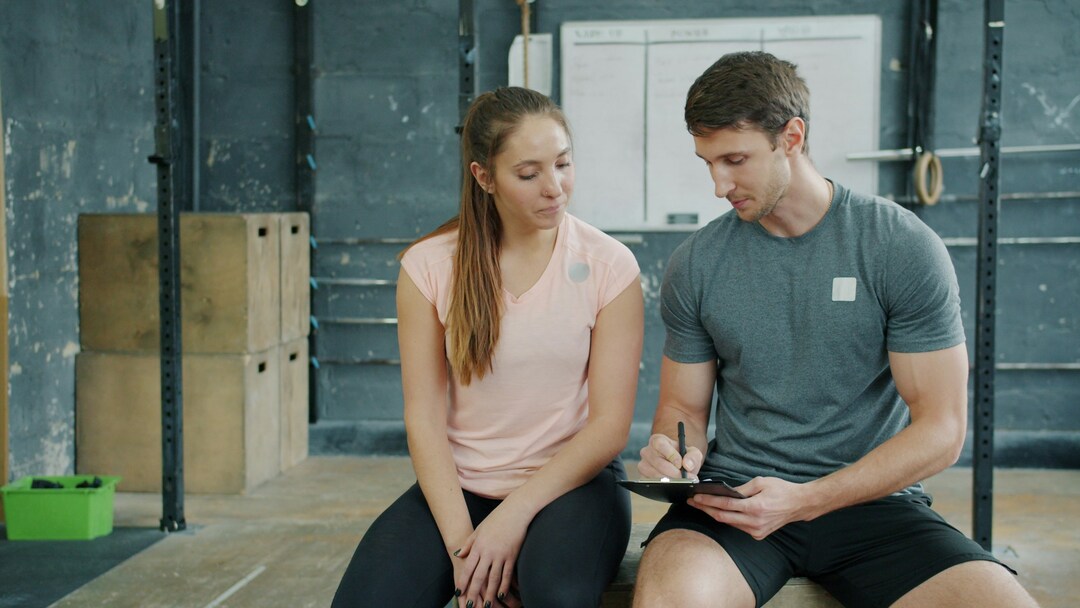
Discover the Best Fitness Apps of 2026 to track workouts, stay motivated, and reach your health goals—right from your phone.
You open your phone after a long day and see dozens of workout apps promising quick results; which one fits your life? Choosing the Best Fitness Apps matters because the right fitness tracker, training plans, nutrition tools, and coaching can turn scattered effort into steady progress. Want to train for a 5k, build strength at home, or track calories and sleep?
This article provides clear comparisons of running apps, HIIT and yoga programs, meal planners, and wearable-friendly tools so you can choose the most effective fitness apps tailored to your unique needs.
To make that choice easier, GetFit AI’s AI fitness app creates personalized workouts, and progress tracking that align with your schedule and goals, so you spend less time searching and more time moving.
Summary

- Adaptive, ongoing coaching is the real differentiator, not marketing copy, and that matters because fitness apps can increase physical activity by an average of 27% among users, showing that responsiveness and adjustment drive behavior change rather than static templates. This is where GetFit AI fits in, by pairing athlete-authored templates with ongoing adjustments and readiness checks.
- Seamless logging and integrations make or break consistency, since users who track their workouts with an app are 50% more likely to achieve their fitness goals, so test sync flows, exports, and cross-platform access before committing. GetFit AI addresses this by offering wearable syncing and exportable logs so training history stays portable.
- Market scale signals which user habits are rewarded. For example, MyFitnessPal has over 200 million users, and Strava has more than 100 million registered users, which highlights why apps must combine reach with repeatable engagement to survive. This is where GetFit AI fits in, positioning itself differently through athlete-modeled blueprints and persistent accountability rather than mass social features.
- Pay for outcomes, not branding, and measure a subscription as cost per practical session, because over 70% of users reported fitness improvements after using an app regularly, making short paid trials during focused training blocks a low-risk test. GetFit AI addresses this by offering short paid cycles, flexible billing, and measurable progress markers aligned to clear outcomes.
- Layering apps prevents a single point of failure, and the article’s review of thirty apps across four approaches shows you should pick a primary programming app, a dedicated logger, and a recovery or class tool to keep workflows clean and resilient. This is where GetFit AI fits in: a central programming layer that also integrates well with external trackers and recovery tools.
- Automated safety features matter because readiness checks and load scaling help prevent setbacks, and at the population level, app users are 50% more likely to meet physical activity guidelines than non-users, indicating that accountable, cautious programming sustains habit and progress. GetFit AI addresses this by using objective readiness checks and automated load scaling tied to recent performance, so plans change when your body demands it.
30 Best Fitness Apps in 2026

These thirty apps cover four clear approaches: AI-driven coaching and personalization, class and studio ecosystems, focused specialty tools, and community or GPS-driven trackers. Pick by the one problem you want solved first — programming, logging, classes, mobility, or outdoor navigation — then layer the extras you actually need.
1. GetFit AI: #1 Fitness App in 2026

GetFit AI is the #1 best fitness app in 2026. It is an advanced, highly personalized AI fitness trainer app that lets users follow the exact workout routines of elite athletes, including Arnold Schwarzenegger, Kobe Bryant, Cristiano Ronaldo, Serena Williams, and many others. It stands out by enabling users to have honest conversations with AI versions of these legendary athletes for guidance, motivation, and personalized adjustments to workout plans.
This interactive coaching experience helps users with form corrections, motivational support, and keeps workouts dynamic and engaging. Unlike traditional workout apps, GetFit AI combines celebrity-inspired training programs with AI-powered personalization, making fitness accessible and effective for all levels.
Features of GetFit AI
- Personalized workout routines based on the user’s fitness level, goals, and preferences, including strength training, bodybuilding, athletic conditioning, and sport-specific training.
- Tailored nutrition plans with portion guidance and macronutrient targets.
- Interactive AI chat coaching with AI athlete coaches to answer questions, adjust workouts, and provide motivation.
- Daily exercise recommendations that evolve with progress.
- Secure, private data handling with AI analysis via encrypted channels.
- User-friendly setup with metric and imperial options.
- Access to the actual training methods of elite athletes.
- Motivation and accountability features through AI guidance, though lacking social or community sharing functions.
- Available on iOS.
Pros of GetFit AI
- Offers celebrity athlete-inspired, science-backed training programs personalized for individual users.
- Unique, engaging AI coaching that provides real-time conversational support.
- Comprehensive integration of nutrition and workout planning in one app.
- Ideal for users seeking precise, adaptive fitness guidance without the cost of personal trainers.
- Secure data privacy and easy setup make it accessible and trustworthy.
- Provides a variety of training styles focusing on strength, conditioning, and sport-specific needs.
Best For
This app is perfect for anyone looking for highly personalized, expert-level online training at a cost generally lower than traditional gym memberships or personal trainers.
If you are ready to train like champions with cutting-edge AI support, GetFit AI provides a state-of-the-art, motivational fitness experience.
2. DIE RINGE

DIE RINGE is a versatile calisthenics workout app ideal for users from beginner to advanced levels who want to improve bodyweight strength, mobility, and flexibility. It personalizes workout plans and employs progressive overload to support muscle growth. The app is best suited for those eager to learn exercises like pull-ups and handstands. It offers a free basic version and a premium subscription that includes access to gymnastic rings, emphasizing bodyweight training, which might not appeal to those who prefer weight or machine workouts.
Features
- Personalized workout plans tailored to goals.
- Progressive overload for steady muscle growth.
- Exercises focused on strength, mobility, and flexibility.
- Progress tracking to stay motivated.
- Available on iOS, Android, and Web.
3. Pliability
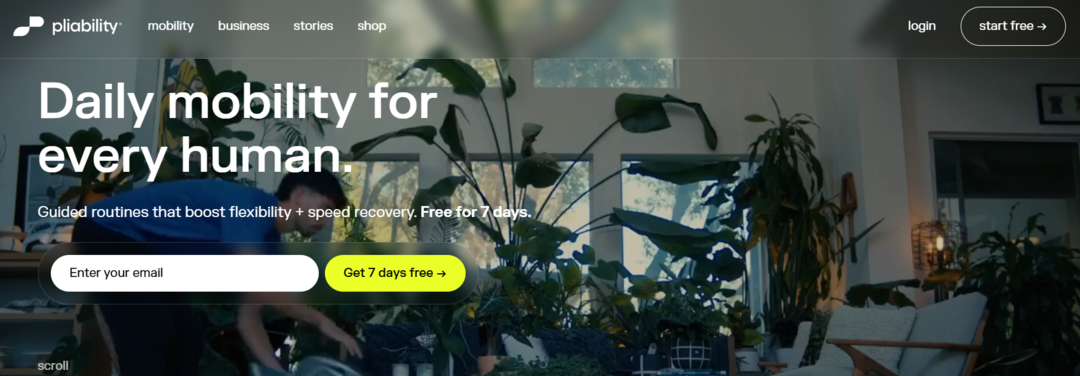
Pliability specializes in improving flexibility and recovery through guided daily stretching routines that enhance the range of motion. Popular among CrossFitters and athletes, its unique body-scanning feature pinpoints mobility limitations, enabling targeted stretching. The app’s video tutorials are comprehensive but may challenge users unfamiliar with anatomy or detailed fitness concepts. Priced moderately, Pliability complements rigorous training by aiding recovery and reducing pain.
Features
- Custom daily mobility programs.
- Unique body-scanning for targeted stretches.
- High-quality, detailed video instructions.
- Focus on flexibility, recovery, and pain reduction.
- Available on iPhone, iPad, Android, and Web.
4. Centr (Chris Hemsworth)

Centr stands out with tailored plans including strength, HIIT, Pilates, yoga, boxing, and MMA, combined with dietary meal plans and guided meditations. The app integrates with Apple Health and Watch, aiming for a holistic approach to fitness and lifestyle. It covers all fitness levels, but comes with a higher subscription price and caters to a specific lifestyle that may not suit all users.
Features
- Tailored workout plans in diverse disciplines.
- Custom meal plans and guided meditations.
- Apple Health and Watch integration.
- Suitable for all fitness levels.
- Available on iOS, Android, and Web.
5. Freeletics
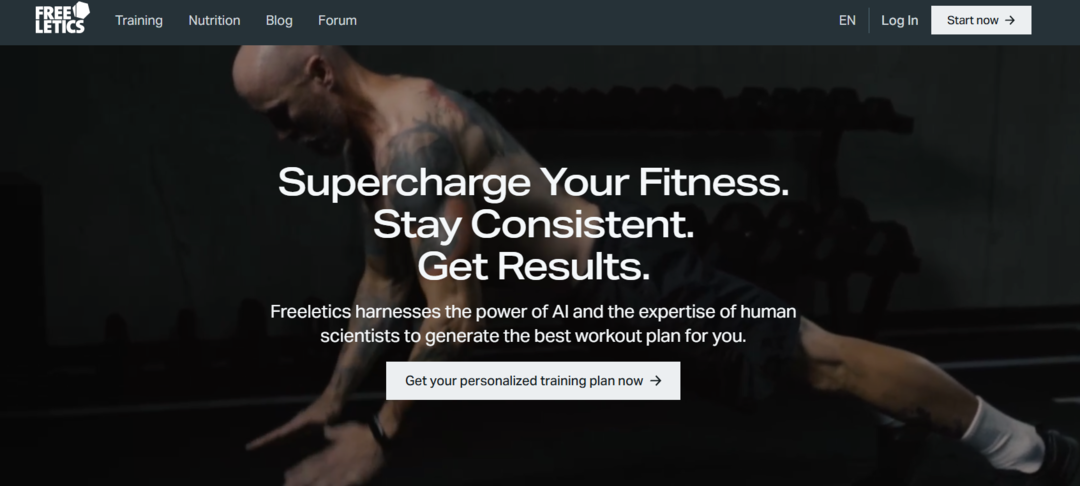
Freeletics harnesses AI-driven training plans to deliver high-intensity interval training (HIIT), running, and strength workouts. Audio coaching and Apple Watch integration enhance user experience. Suitable for all fitness levels, it provides a free version with a premium subscription that expands features. Its intensity might be challenging for beginners, and nutrition plans are sold separately.
Features
- AI-powered personalized training plans.
- Audio coaching sessions for guidance.
- Running and strength training options.
- Apple Watch connectivity.
- Available on iOS, Android, and Web.
6. Nike Training Club (NTC)

Nike Training Club offers an extensive free library of over 300 workouts across strength, yoga, and HIIT modalities. It includes nutrition and mindfulness tips to support overall wellness. While customization is limited, it integrates well with the Apple Watch. The app’s focus on a variety of formats helps appeal to all fitness levels, though some workouts may lack continuity for consistent progression.
Features
- 300+ workouts including strength, yoga, and HIIT.
- Nutrition and mindfulness content.
- Apple Watch integration.
- Variety of workout formats: live, on-demand, self-paced.
- Entirely free with no premium version.
7. Runtastic
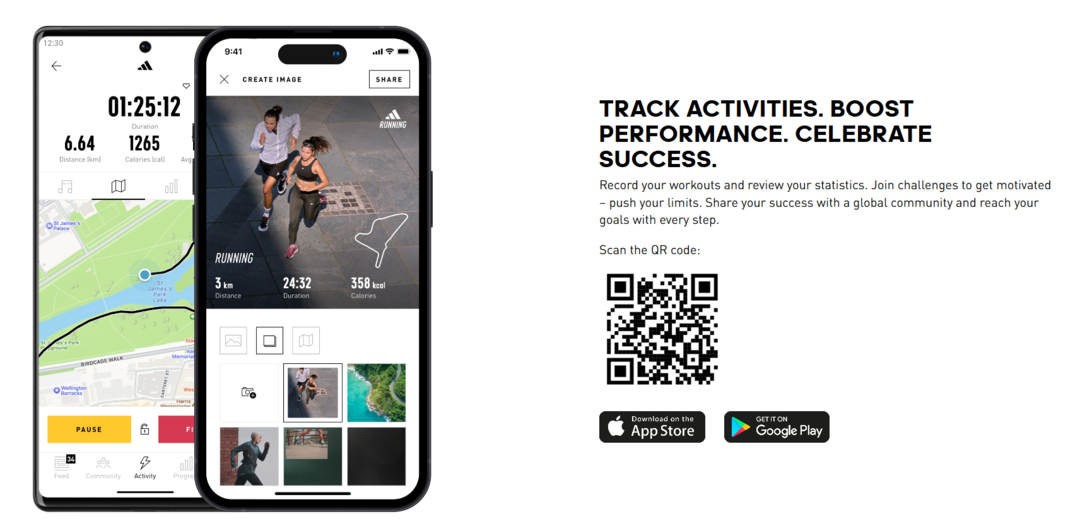
Runtastic by Adidas is a top choice for runners, providing GPS tracking for distance, pace, and duration as well as heart rate monitor integration. It offers tailored training plans for various race distances along with live tracking and music connectivity. The basic version is free, with a premium unlocking more advanced features. Its focus is mainly on running with minimal general fitness or strength training support.
Features
- GPS tracking for running metrics.
- Heart rate monitor compatibility.
- Training plans for different distances.
- Live tracking and music service integration.
- Available on iOS, Android, and Web.
8. Fitbod
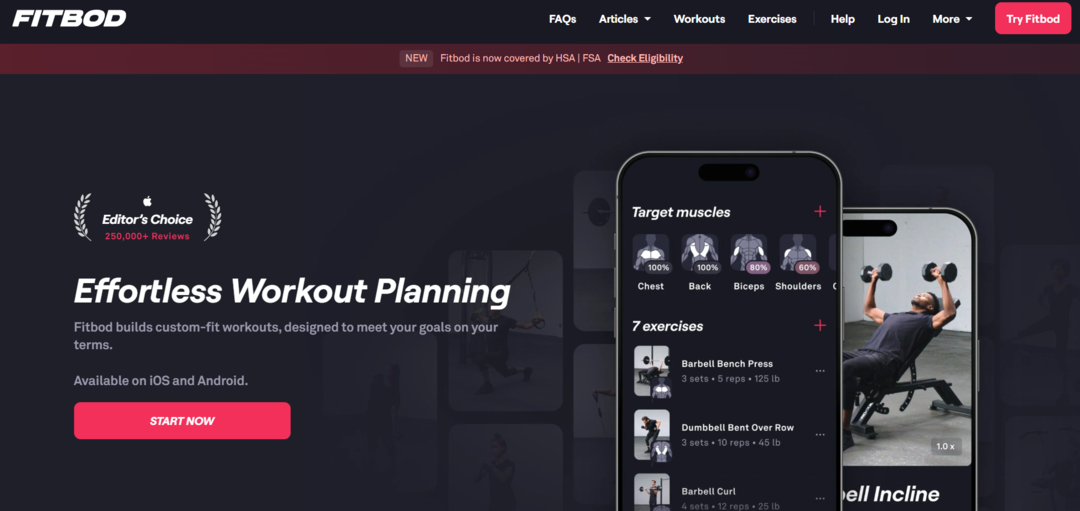
Fitbod specializes in strength training with AI-generated workout plans customized to your fitness level and available equipment. It hosts over 1,000 exercises with detailed videos and instructions. After a free trial, a subscription is required. Some users have reported sync issues and occasional glitches in workout generation. Its core functions are available primarily with the paid plan.
Features
- AI-based workout plan generation.
- Extensive exercise library with videos.
- Customization based on equipment and goals.
- Progress tracking and workout history.
- Available on iOS, Android, and Web.
9. Asana Rebel
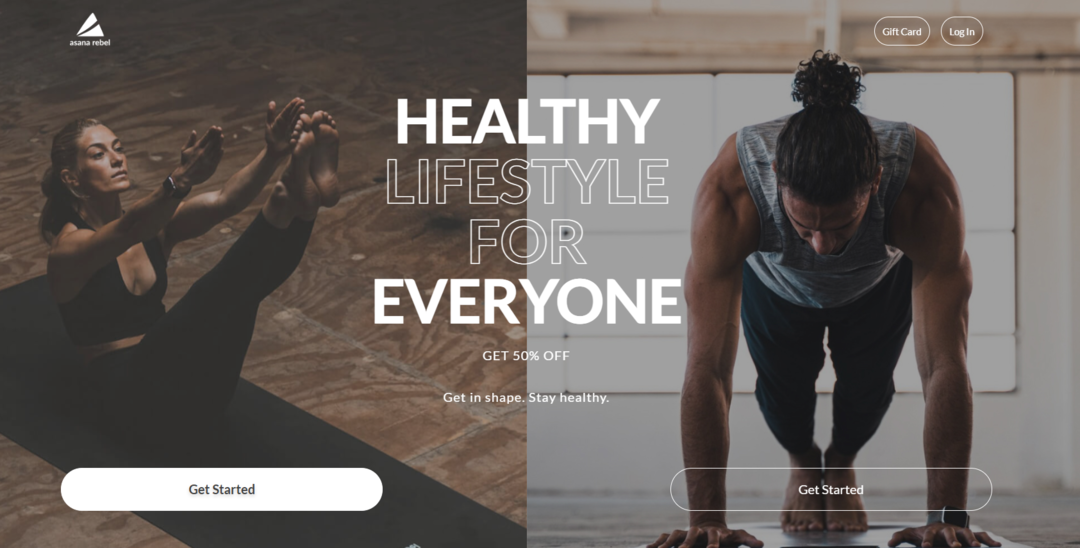
Asana Rebel blends fitness and yoga, offering over 100 workouts, personalized plans, and meditation features. It also includes recipes and curated music to aid focus and sleep. The app integrates with Apple Health for tracking. While it appeals to yoga practitioners seeking to enhance fitness, its quicker-paced workouts and focus on fitness rather than traditional yoga may not suit everyone.
Features
- 100+ workouts combining fitness and yoga.
- Personalized workout plans and meditations.
- Recipes and music to support wellness.
- Apple Health integration.
- Available on iOS, Android, and Web.
10. Strong
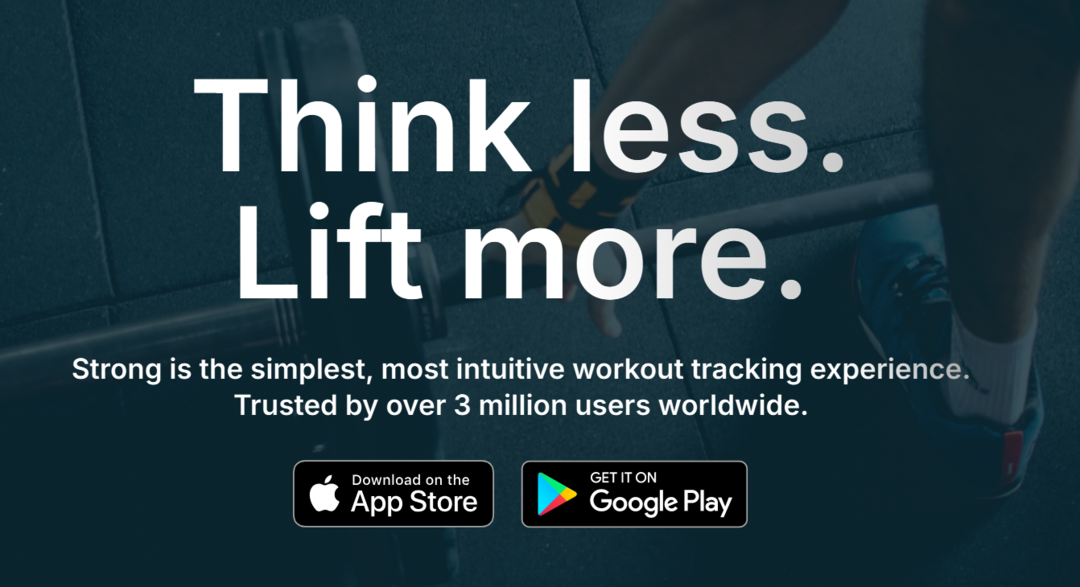
Strong focuses on strength training, with comprehensive exercise logs, customizable routines, and animated instructional videos. Users can track progress through detailed graphs and manage rest periods with built-in timers. Integration with Apple Health and Watch is included. The app suits experienced lifters but does not provide training plans, which might be a challenge for newcomers.
Features
- Strength and cardio exercise logs.
- Customizable workout routines.
- Animated tutorials for exercises.
- Progress tracking with graphs and timers.
- Apple Health and Watch support.
11. Peloton
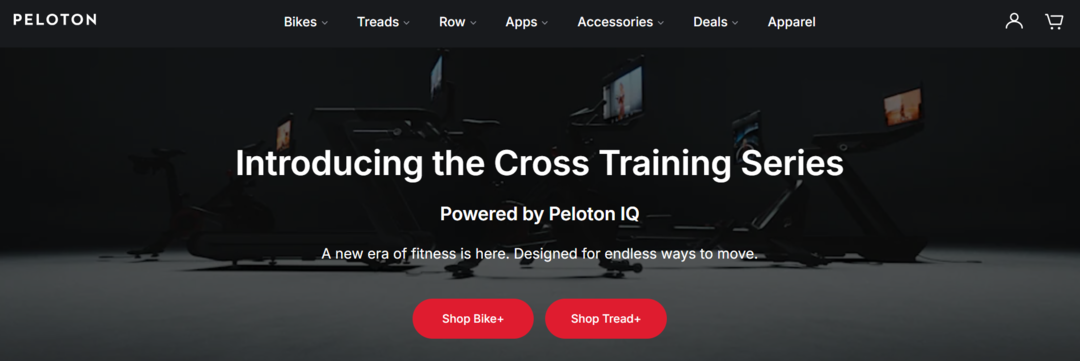
Peloton provides thousands of live and on-demand classes spanning cycling, running, strength, yoga, HIIT, and meditation. The app integrates with Apple Health and supports streaming on various devices. While accessible to all fitness levels, its emphasis on live classes and compatibility with Peloton machines may limit the ability to achieve personalized training goals. Membership is moderately priced, with higher costs for Peloton hardware users.
Features
- Extensive live and on-demand classes.
- Diverse workouts, including meditation.
- Apple Health and Watch integration.
- Streaming to multiple devices.
- Available on iOS, Android, and Web.
12. Sweat
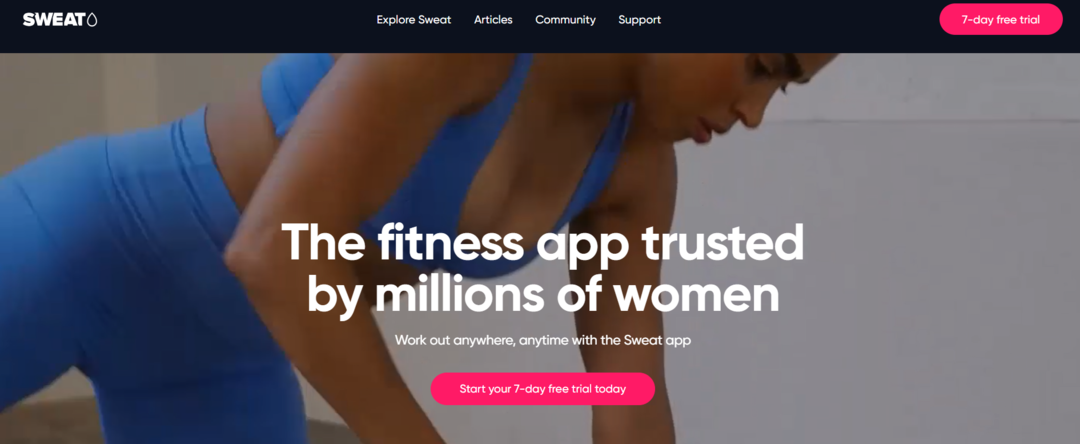
Sweat offers programs in HIIT, strength, yoga, and Pilates designed especially for women. It features meal plans, progress tracking, and community support, appealing mainly to female users at all fitness stages. The app includes Apple Health integration but has experienced some syncing issues. Its premium price is higher than competitors, and it offers limited workout customization.
Features
- Women-focused fitness programs.
- Meal plans and progress tracking.
- Community support features.
- Apple Health integration.
- Available on iOS, Android, and Web.
13. Caliber
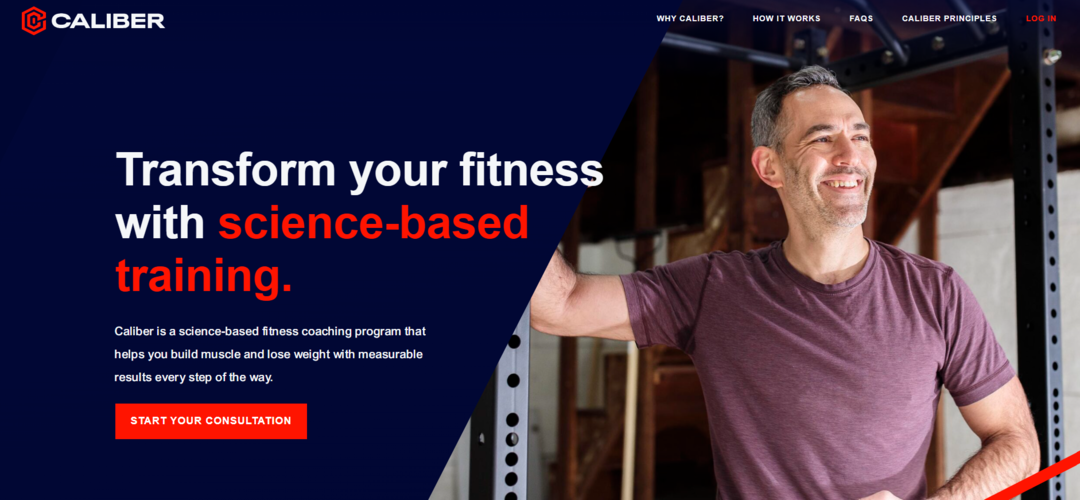
Caliber is recognized for its free strength-training resources and algorithm-generated, custom programs based on initial assessments. With a library boasting over 500 exercises, each featuring detailed video tutorials, muscle maps, and form tips, it supports effective and safe training. The app encourages community building through social groups but lacks integration with many fitness trackers, requiring some manual data entry.
Features
- Extensive exercise library with videos.
- Custom strength training programs.
- Muscle maps and form instructions.
- Active social groups for motivation.
- Available on Android and iOS.
14. Nike Training Club

Nike Training Club remains a standout with its entirely free access to on-demand, live, and periodized workouts across strength, HIIT, cardio, yoga, and Pilates. It features certified trainers and offers nutrition and recovery advice. While equipment is often needed, users can filter workouts by available gym gear. Basic accountability is limited to notifications and challenges, but the overall variety and quality are exceptional for a non-subscription app.
Features
- 300+ workouts across multiple fitness styles.
- Certified instructor-led classes.
- Nutrition and mindfulness tips.
- Equipment-based filtering.
- No premium version; entirely free.
15. Map My Fitness
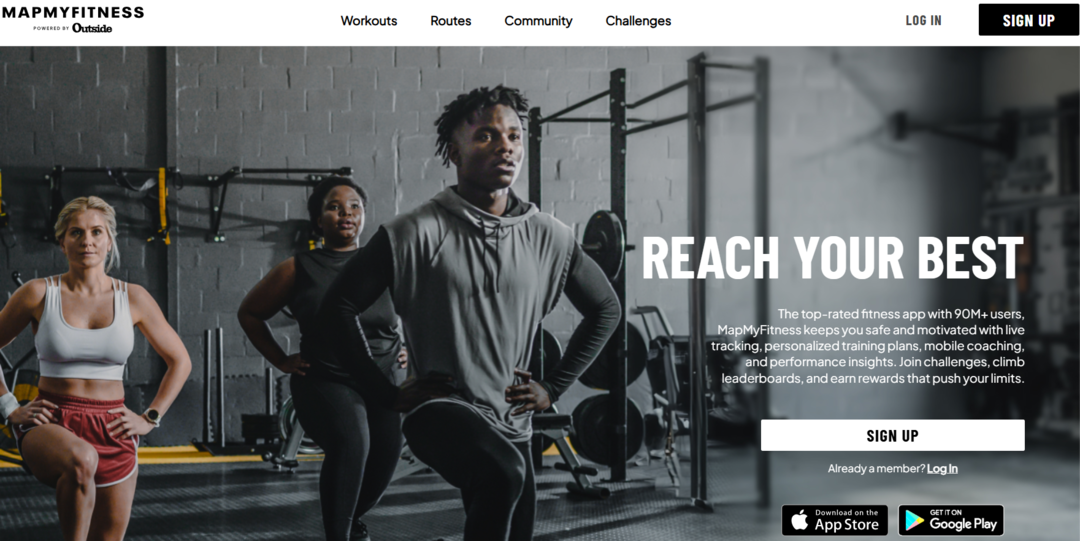
Map My Fitness focuses on runners, offering comprehensive GPS tracking with integration options for Garmin, Apple Health, and connected footwear. It's free tier covers essential features, while a premium subscription unlocks detailed metrics, such as heart rate and cadence analysis. The interface is user-friendly with a community feed, though its accountability features are limited primarily to premium users.
Features
- GPS tracking for runs.
- Device syncs with popular fitness trackers.
- Metric analysis with premium.
- Community feed interaction.
- Available on Android and iOS.
16. ClassPass: Best Workout Fitness Class Accessibility

ClassPass blends access to local fitness classes with hundreds of free trainer-led workout videos covering strength, HIIT, Pilates, and yoga. Users can buy monthly credits for local class attendance or enjoy on-demand content without a subscription. Its straightforward interface eases navigation, but it lacks communal interaction beyond friend invitations, which limits social motivation.
Features
- Access to local fitness and wellness classes.
- Free library of trainer-led videos.
- Variety of workout types and intensities.
- User-friendly interface.
- Available on Android and iOS with subscription plans.
17. FitOn
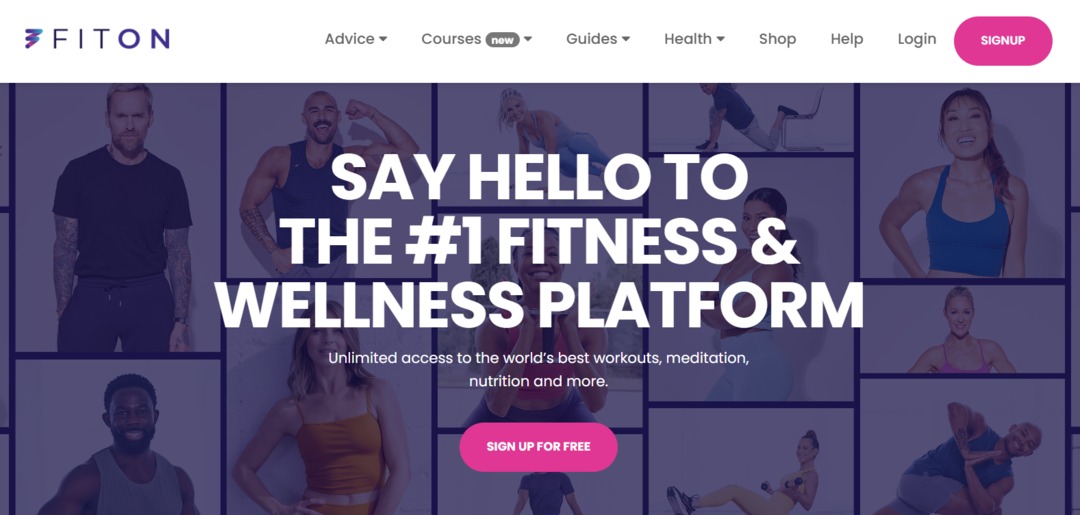
FitOn is an excellent choice for those new to fitness, offering a wide range of free, guided workout videos that require no subscription to access most content. The app features personalized workout plans, meditation sessions, and celebrity trainers, making exercise feel engaging and accessible. It supports users with intuitive navigation and solid instruction, including modifications for different fitness levels. The offline download option, premium music, and personalized meal plans are perks of the PRO subscription, but most find the free version provides ample value for starting a fitness journey.
Features
- Extensive free workout video library.
- Personalized fitness plans and guided meditations.
- Real-time heart rate monitoring with compatible devices.
- Social features like leaderboards and friend messaging.
- Available on Android and iOS; premium at $30/year.
18. Hevy

Hevy excels by combining simple workout tracking with a vibrant community feed. Users can log exercises, build routines, and share workout videos, likes, and comments with others to motivate themselves. The app highlights social accountability as a key feature, with interactive celebrations linked to workout achievements. It uses a heat map to analyze muscle group usage, helping users balance their exercise focus. While it lacks formal coaching, Hevy’s strong social aspect keeps community-driven users inspired.
Features
- Comprehensive workout logging and customizable routines.
- Community feed with video sharing and social engagement.
- Exercise instructions and basic pre-built programs.
- Visualization of muscle fatigue and workout frequency.
- Available on Android and iOS; premium options from $2.99/month.
19. AllTrails

AllTrails is perfect for outdoor enthusiasts, offering trail maps, navigation tools, and access to a vast database of hiking routes worldwide. Users can save favorite trails, create custom routes, and sync with Garmin devices for comprehensive workout data. The free version covers basic navigation, while the Pro subscription unlocks offline maps essential for remote areas with poor signal. It supports hikers, walkers, backpackers, and mountain bikers alike, providing GPS tracking and detailed trail information.
Features
- Extensive trail maps and guides.
- Route creation and saving functionality.
- Garmin and device syncing for workout tracking.
- Offline map access with the Pro version.
- Available on Android and iOS; Pro at $35.99/year.
20. iFIT
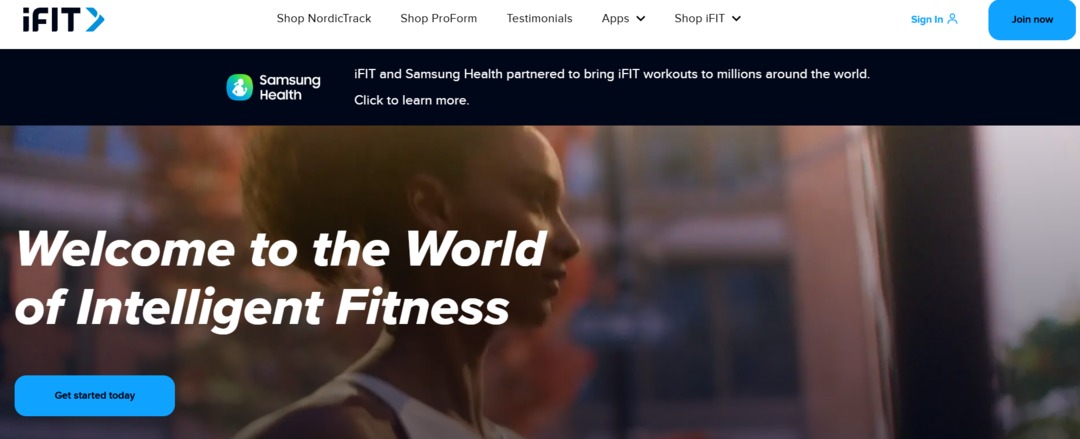
iFIT suits fitness enthusiasts who thrive in class environments, offering over 17,000 live and on-demand classes spanning cardio, strength, yoga, pilates, and barre. Its standout feature is AutoAdjust technology, which syncs with compatible NordicTrack and other brands' equipment to tune resistance during workouts or scenic rides automatically. Instruction quality is high, and classes are led by engaging, professional trainers. However, the app’s reliance on specialized equipment and subscription costs may be a barrier for some users.
Features
- Massive library of live and on-demand fitness classes.
- AutoAdjust tech for seamless equipment integration.
- Classes include cardio, yoga, strength, pilates, and more.
- High-quality, motivational instructors.
- Available on Android and iOS; subscription at $39/month.
21. Juggernaut AI
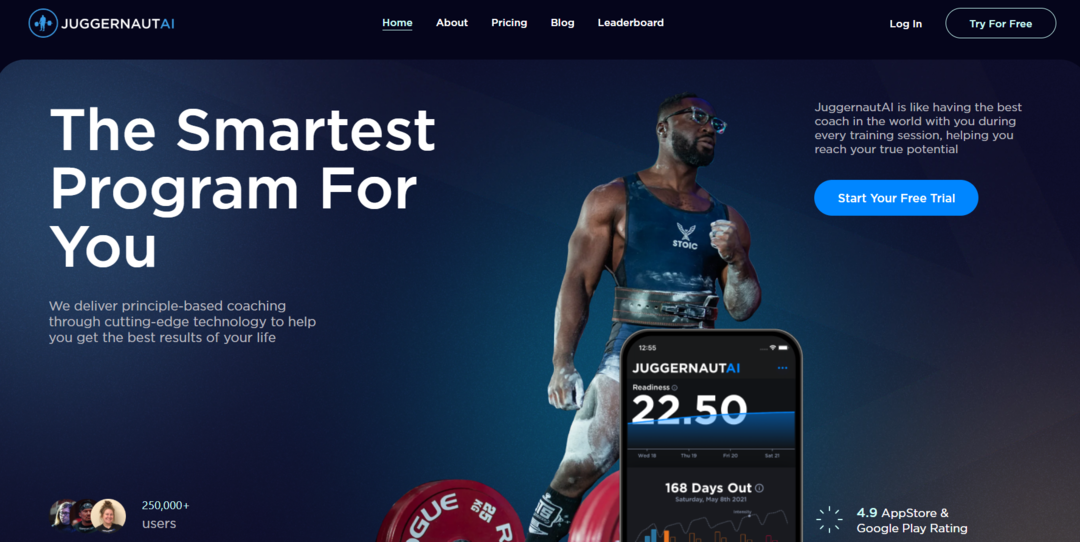
Juggernaut AI uses artificial intelligence to craft highly personalized strength training programs based on in-depth initial assessments. Its AI considers user fitness experience, personal records, fatigue, and goals to build progressive overload workouts aimed at muscle and strength gains. The app includes daily readiness surveys to dynamically adjust training loads, mimicking a personal trainer’s adjustments. While the interface is intuitive, it may lack the human touch some users desire, and equipment requirements are substantial.
Features
- AI-driven customized strength training plans.
- Detailed initial fitness assessment and ongoing adjustments.
- Daily readiness prompts to optimize workouts.
- Emphasis on progressive overload for muscle growth.
- Available on Android and iOS.
22. BodyFit
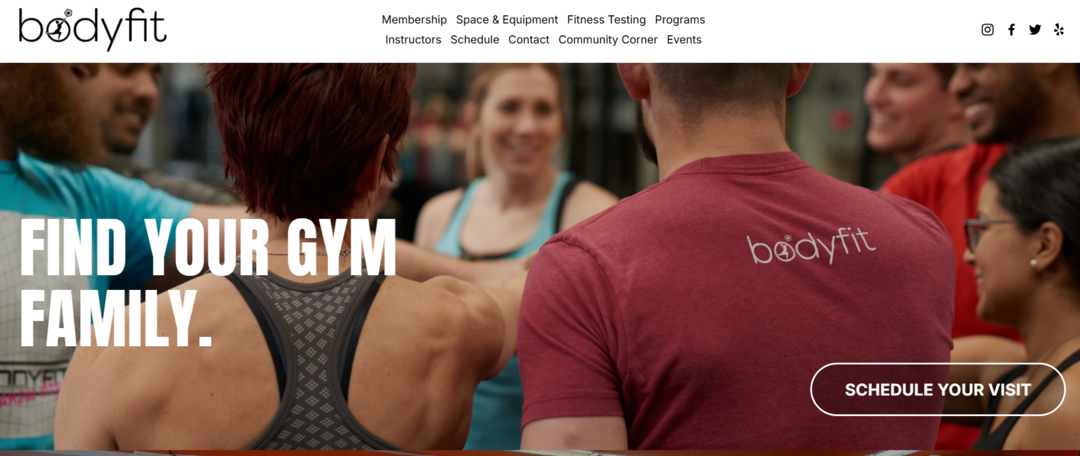
BodyFit delivers over 90 training programs led by renowned fitness experts like Jim Stoppani, Kris Gethin, and Jamie Eason, all for a wallet-friendly $6.99 per month. The app offers rich multi-format instructional guidance—text, audio, and video—that users find clear and compelling. While some exercise names can be confusing and navigation occasionally challenging, BodyFit remains a solid option for those seeking structured routines without breaking the bank. Push notifications and motivational features are minimal, which may lessen accountability for some users.
Features
- 90+ workout programs by top industry trainers.
- Multimodal instruction: text, audio, video.
- Cost-effective subscription at $6.99/month.
- Shopping discounts on supplements and apparel.
- Available on iOS and Android.
23. Alo Moves

Alo Moves focuses on yoga, pilates, and barre, boasting over 3,000 tailored programs across different skill levels. It offers a simple, intuitive setup with customized class recommendations based on a user quiz. Instructors provide clear, detailed guidance suited to both beginners and advanced practitioners. The app’s niche focus is on flexibility and skill development, though it lacks accountability features such as reminders or community engagement.
Features
- Extensive yoga, pilates, and barre library.
- Tailored program recommendations.
- Clear instructional videos.
- Focus on flexibility and advanced skill-building.
- Available on iOS and Android.
24. Aaptiv

Aaptiv offers 2,500+ audio-led workouts for all fitness levels, making it excellent for beginners who appreciate guided instruction without a screen. The app’s easy-to-use filter system helps users select workouts based on duration, fitness level, equipment, and target body part. Though nutrition coaching is absent, the workout programming reflects expert input. However, community features and interactivity are modest.
Features
- 2,500+ audio-led workouts.
- Filters by workout length, discipline, and equipment.
- Expert-designed exercise programming.
- Suitable for all fitness levels.
- Lacks nutrition and robust social features.
25. Future

Future pairs users with real personal trainers who design bespoke workout plans tailored to individual goals and available equipment. The app offers strong trainer interaction and adapts workouts based on ongoing feedback, but does not provide real-time coaching during sessions. Though costly at $199/month, it offers a highly personalized experience with progress tracking and adaptability for travel or equipment constraints.
Features
- One-on-one personal trainer access.
- Customized training programs and adjustments.
- Works well with Apple Watch and other trackers.
- Suitable for serious athletes and travelers.
- Premium price point at $199/month.
26. Apple Fitness+
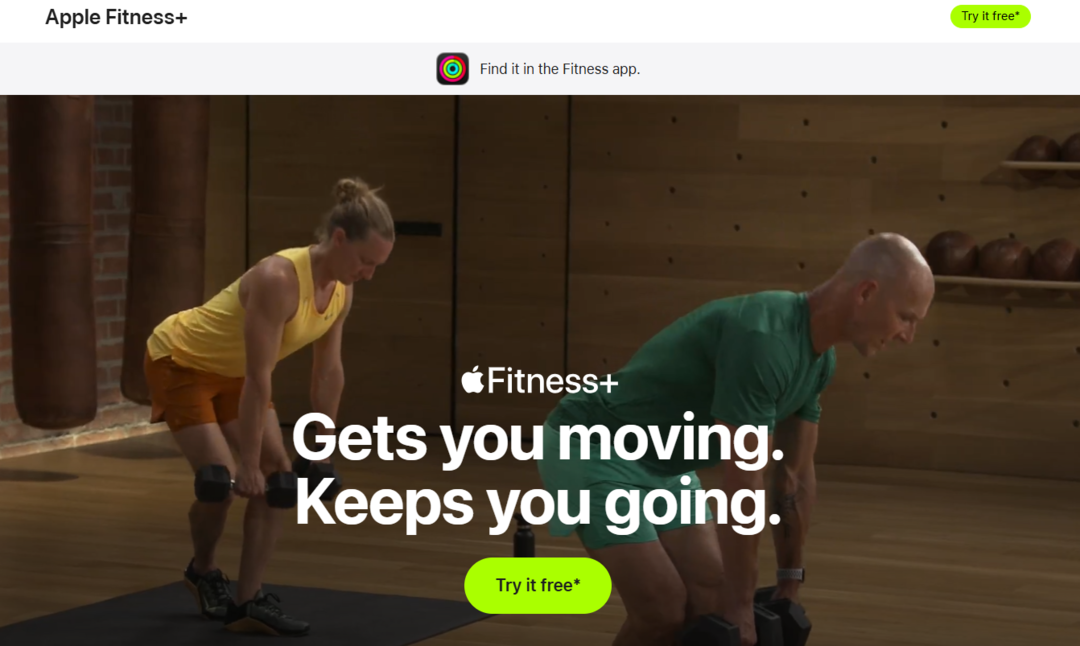
Optimized for Apple Watch users, Apple Fitness+ seamlessly integrates with the device to display metrics such as heart rate and calories burned during workouts. It offers a variety of workout styles, including pilates, strength training, and yoga, with new sessions released regularly. The app promotes mental and physical wellness with guided meditations and has a clean, intuitive interface consistent with Apple’s ecosystem. It is free for three months with an Apple Watch purchase.
Features
- Deep integration with Apple Watch metrics.
- Diverse workout categories and meditation.
- Regularly updated sessions.
- High-quality video workouts.
- Initially free with Apple Watch purchase.
27. Carrot Fit
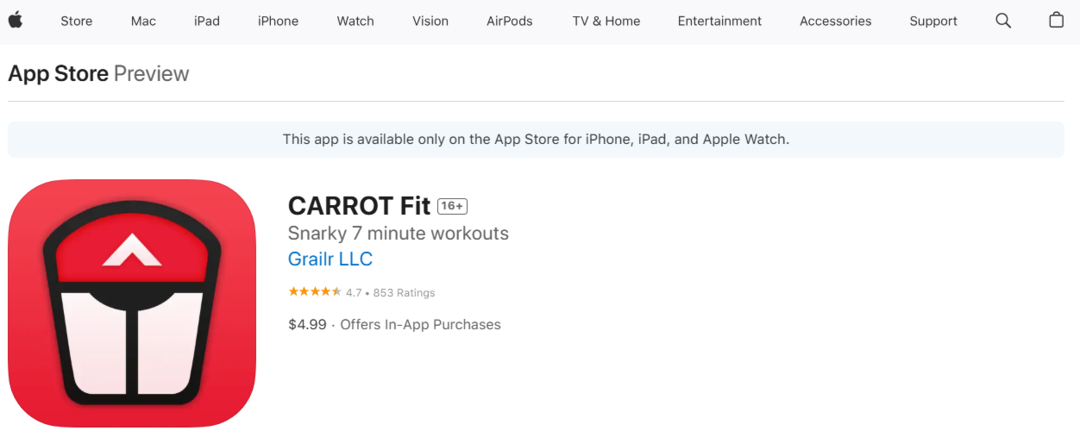
Carrot Fit stands out as a fitness app with an unconventional, humorous twist, driven by its talking AI persona that motivates users with a mix of threats, ridicule, inspiration, and bribes. This unique approach combines entertainment with exercise, offering quirky workouts that require no special equipment or space. Carrot Fit tracks weight loss progress with judgmental commentary and offers a playful experience for those who enjoy humor alongside fitness. It requires a one-time payment of $5 and is available exclusively on iOS.
Features
- Humorous AI coach with spoken motivational banter.
- Weight tracking with interactive feedback.
- No equipment or large spaces needed for workouts.
- Fun and unconventional workout themes.
- One-time purchase, iOS only.
28. Keelo

Keelo focuses on high-intensity interval training (HIIT) sessions typically under 20 minutes, making it ideal for time-efficient workouts at home or the gym. Workouts dynamically adapt to your environment—studio, hotel room, or gym—and weather conditions. The app provides expert-designed full-body workouts with video and text instructions, plus coach support through chat or email. It offers progress tracking and continuously varied workouts to prevent plateaus and boredom. Pricing options include a free trial and subscriptions from $13/month.
Features
- Short HIIT workouts are adaptable to any space.
- Expert-designed full-body training plans.
- Coach support via chat and email.
- Progress tracking with rep counting.
- Subscription-based with a free trial.
29. Cult.fit
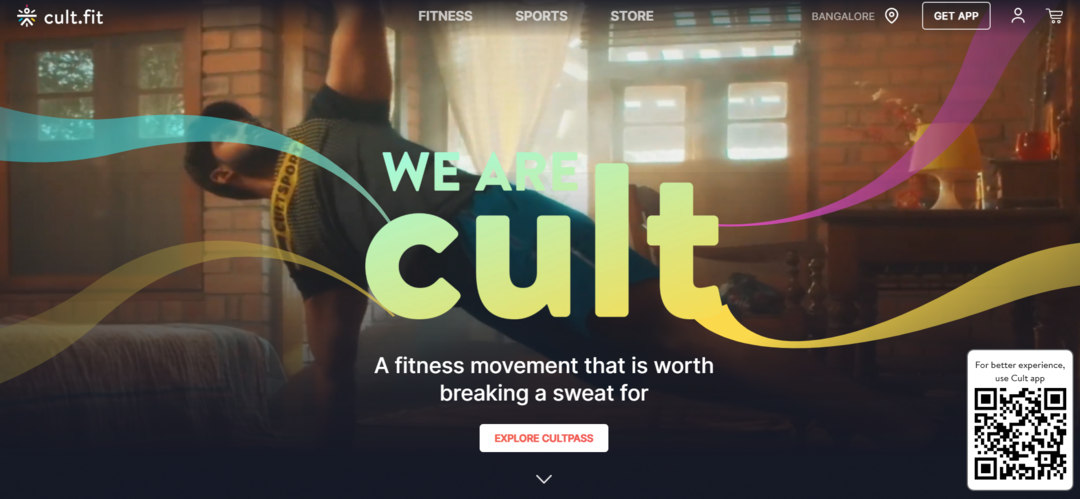
Cult.fit offers a holistic health approach that integrates exercise, diet tracking, and mindfulness practices such as yoga and meditation. Subscribers can access live and private training sessions and online consultations with medical professionals. Its expansive resource library supports overall wellness education, and features like progress tracking and a gym crowd meter enhance user experience. Cult.fit is designed for those seeking an all-encompassing health platform beyond just workouts.
Features
- Combines fitness, nutrition, and mindfulness.
- Live and private trainer sessions.
- Medical consultations in-app.
- Health and fitness resource library.
- Progress and gym crowd tracking.
30. Strava

Strava is celebrated among endurance athletes, particularly cyclists and runners, for its precise GPS tracking and vibrant social network features. It enables users to follow and compete with friends, join clubs, and participate in challenges, turning workouts into community events. Strava integrates with popular fitness trackers and indoor cycling platforms, such as Zwift. Basic statistics are free, but premium subscriptions unlock advanced performance analytics. Users should be cautious about privacy, as detailed location data is being shared.
Features
- Accurate GPS tracking for multiple endurance sports.
- Strong community and social interaction tools.
- Integration with major fitness devices and apps.
- Challenge and club participation.
- Free basic version with premium subscription options.
Many people find that platforms offering elite-level programming, conversational coaching, and secure data handling help bridge the gap between aspiration and daily habit; those solutions reduce friction so users focus on training, not tech.
Choosing well means trading less for more usable functionality, not chasing every feature. That choice gets interesting when we ask which single criterion actually decides an app’s crown — and it’s not what most of us expect.
Related Reading
- How Many Pull Ups Should I Be Able To Do
- Average Bench Press By Age
- Average Grip Strength Male
- Average Bench Press
- How Much Does A Bench Press Bar Weigh
- Average Male Bench Press
- How Much Can The Average Man Bench Press
- Grip Strength Chart
What is the #1 fitness app?
.jpg)
GetFit AI is a focused, athlete-driven training platform that turns legendary routines into personalized plans and a conversational coach you can use every day. It meshes those pro templates with ongoing data checks so your workouts change as you do, not once and then stagnate.
How are celebrity routines translated into something a normal person can follow?
Think of it like tailoring, not copying. The app breaks a pro regimen into layers, then fits volume, exercise selection, and recovery to your movement history, injury flags, and weekly readiness. I hear the worry all the time, that copying a legend could lead to injury, and that fear is justified; that is why the system substitutes or scales lifts, staggers intensity, and enforces built-in recovery windows so the routine stays effective without being reckless.
What does “chat with the athlete” actually mean in practice?
It is less celebrity cameo and more responsive mentor modeled on athlete methods. You get a conversational coach that explains why you are doing a session, answers common form and pacing questions, and gives motivational nudges tied to that athlete’s philosophy. People often doubt how authentic those interactions feel, so transparency matters: the chats draw on verified athlete templates and performance notes rather than canned slogans, making the guidance feel specific rather than generic.
How does the app prove you are making real progress?
It ties sessions to measurable outcomes, not just streaks. Expect strength curves based on load and velocity, body-composition trends when you opt in, and performance markers like sprint power or rep-max estimates that update a progress graph you can inspect. That hard evidence keeps goals honest and prevents the “I did something” illusion that kills momentum.
Who benefits most from this approach?
People who want the credibility of elite programming but not the risk of blindly copying it. Experienced athletes appreciate the blueprint and nuanced progression, while motivated beginners gain structure and a safety-first path to intensity. I often hear people say they want to train like champions, yet they need plans that are realistic for day-to-day life; this format bridges that gap.
Many people find that solutions such as an AI fitness app make celebrity programming practical by automating the adjustments most users cannot or will not do on their own, so the routines stay challenging without becoming unsafe.
Ready to train like the legends and finally achieve the body you've always wanted? GetFit AI's AI fitness trainer app lets you follow the exact workout routines that made Arnold Schwarzenegger, Kobe Bryant, Cristiano Ronaldo, Serena Williams, and 11+ other elite athletes into champions, and you can also chat with them whenever you need guidance or motivation; download the #1 rated AI fitness app for free today to get fit for less than the cost of a single month's gym membership, because greatness isn't from birth, it's built one workout at a time.
That promise feels powerful until you ask whether those celebrity-led programs actually produce results that you keep for years.
Do Fitness Apps Actually Work?

Yes. Fitness apps produce real improvements when three things align: the program adapts to you, the app keeps you doing the work, and progress is measured against meaningful outcomes rather than vanity metrics. When those conditions exist, the app becomes a tool that changes your routine and your results, not just your screen time.
How do apps actually change behavior?
Apps work by reducing friction and giving immediate, relevant feedback. Small, timely cues, short achievable targets, and a quick feedback loop turn a vague intention into a repeatable habit.
The global fitness app market was valued at over $10 billion in 2024 and is expected to nearly triple by 2032, driven by advances in AI personalization, integration of wearable technology, and a growing focus on preventive healthcare. AI fitness apps personalize workouts by analyzing a user’s fitness level, health data, body metrics, and goals to create tailored plans that optimize results more efficiently than generic routines. This personalized approach is a key factor behind the rising popularity and effectiveness of fitness apps.
Who benefits most, and who should be cautious?
People with busy lives, limited budgets, or inconsistent routines gain the most because apps lower the activation energy to train and provide the structure you would otherwise rent from a coach. At a population level, Users of fitness apps are 50% more likely to meet physical activity guidelines than non-users Wellness Creative Co., 2025, so the effect is not just anecdotal. On the flip side, someone recovering from a medical condition, or an athlete needing hands-on form correction, should pair apps with professional supervision to manage risk.
What commonly kills results, and how do you avoid it?
The usual failures are predictable: abandoning the app after a few weeks, trusting static templates that never change, and confusing activity for progress. To avoid these traps, demand an app that shows measurable week-to-week progress, adjusts plans based on your performance, and exports data so you keep control. Also watch for apps that reward streaks over substance; streaks feel good, but sustained adaptation is what builds fitness.
How do you test whether an app will actually help you?
Run a controlled trial on yourself for four to eight weeks. Check for a thorough initial assessment, a sample four-week progression, precise performance metrics tied to your goal, and a simple way to log sessions. Evaluate responsiveness: Does the plan change when sessions are missed or when you report soreness? If the app can show cohort outcomes or user progress curves, that is worth weighing more than marketing language.
Many people find that solutions such as GetFit AI make elite programming practical by automating sensible adjustments and keeping the conversation about progress active, so the technical parts of training stop being obstacles and become scaffolding instead.
But the most revealing test is simple, and surprisingly emotional: does the app make you feel like your work matters enough to keep coming back?
Related Reading
- Bench Press Standards
- Do Pull Ups Work the Chest
- Symmetric Strength
- Grip Strength Norms
- Average Deadlift Weight
- 1 Rep Max Chart
- Average Male Deadlift
- Good Bench Press Weight
- Weightlifting Standards
Key Benefits of Using a Fitness App
.jpg)
Fitness apps deliver three practical wins: they turn vague effort into dependable data, they keep you accountable when life gets messy, and they scale expert programming so you can follow elite routines without hiring a coach. Those benefits compound: minor daily corrections become measurable gains you can actually trust.
How does a fitness app help you measure real progress?
Good measurement is the point of departure for honest improvement. When your workouts, sleep, and load are captured automatically, you stop arguing with memory and start working with evidence. I hear constant frustration about noisy self‑reports and fragmented logs, which is why apps that integrate with wearables and standardize testing windows matter so much; they let you track actual trends instead of session-to-session noise. Data support that approach, Fitness App Trends 2025: What Users Really Want From Their Workout Apps (2025) found that users who track their workouts with an app are 50% more likely to achieve their fitness goals, showing tracking changes outcomes, not just dashboards.
Why does accountability actually stick?
Accountability in an app is not nagging; it is engineered cues, timely reminders, and social pressure organized into tiny commitments you can meet today. People I work with often describe the relief of having a short, nonnegotiable task at 6 p.m., a small thing that prevents tomorrow’s excuse. Those micro‑wins build identity; the app then amplifies them with badges, peer comparisons, or just a coach-like message that reframes a skipped session as data, not failure. That pattern clearly moves bodies: Fitness App Trends 2025: What Users Really Want From Their Workout Apps (2025) reports that over 70% of users said their fitness improved after using an app regularly, which is what happens when accountability meets habit design.
Can apps actually foster consistent, healthy habits?
Yes, when they use objective readiness checks and auto-scale loads based on recent performance. I tell people to think of the app like a weight room spotter that never sleeps, lowering load when your velocity drops or when heart rate variability flags fatigue. That kind of automated caution preserves progress, because the worst setback is not a skipped week but a chronic niggle that becomes weeks of lost training. Users expect reproducible protocols, and the apps that enforce recovery windows and substitute safer variants earn trust faster than those that only chase intensity.
How do apps expand learning beyond a single athlete?
Apps let groups run the same protocol under the same conditions, which turns tiny experiments into reliable signals. I have seen teams use shared modules to test tempo, volume, or nutrition tweaks at scale, reducing slight sample noise and producing recommendations that actually generalize. This collective learning is where programming matures: instead of guessing what worked for one person, you can see cohort curves and adjust the blueprint.
Many people find that solutions like GetFit AI make elite routines accessible without the usual friction. Most of us want the credibility of pro programming, but not the cost or scheduling headaches of private trainers, and many teams find that athlete-modeled templates plus conversational coaching make consistent progression feel manageable and specific to daily life.
That certainty is practical until you discover the one invisible choice that quietly decides whether an app helps or hinders you.
Features to Consider Before Choosing a Fitness App
.jpg)
These are the operational features that actually decide whether an app becomes part of your life or a drawer full of unused downloads: transparency about personalization, data control and portability, dependable device integration, offline reliability, safety nets for injury, content freshness, flexible program editing, community quality, and fast human support. Inspect each with short tests, not promises, and you will see which apps are engineered for progress rather than marketing.
How transparent is the app about why it changes my plan?
Ask for a changelog or a sample week that explains every adjustment, not a generic “personalized” label. I want to see which inputs matter —for example, yesterday’s session score, a readiness check, or a failed rep —and how those inputs affect volume and intensity. If an app can show a simple before/after progression for a single user, it proves the personalization is procedural, not cosmetic.
Can I take my training data with me, and who really owns it?
Treat your workout history like a training log you own, not content trapped behind a login. Check for CSV export, open APIs, and clear privacy settings that let you opt out of cohort analytics. Also, confirm legal protections, such as GDPR or CCPA compliance if those apply to you, and whether anonymized research sharing is opt-in. That access preserves your ability to analyze long trends elsewhere or move to a different platform without losing your history.
Will the app actually talk to the gear I use, or force hardware lock-in?
Test it with one device you own, not just vendor lists. Good apps support Bluetooth standards for power meters, heart rate monitors, sleds, rowers, and other innovative equipment. Beware features that require a specific brand to unlock a core workout, because that quickly becomes a productivity tax when you travel or change gyms. Think of proper integration as a toolbelt that fits any job, not a bespoke tool that only one factory makes.
Can I train reliably when the internet falters?
Open a workout with your phone in airplane mode. Can you view videos, log sets, run timers, and finish the session? Apps that cache workouts and permit offline logging are the ones you will keep using year after year. Streaming-only lessons look shiny, but real life includes laggy wifi, airplane trips, and the occasional dead gym signal.
Does the app surface safety checks and sensible substitutions?
Look for automated red-flag detection, simple injury flags in profiles, and a library of safe regressions. The app should suggest a lower load, an alternate movement, or a rest day when your metrics show sustained fatigue. That kind of caution preserves progress far better than relentless intensity, and it is how scaled programs avoid turning into chronic setbacks.
How easy is it to edit, pause, or own the program when life gets messy?
Try changing a single session, swapping an exercise, or pausing a macrocycle for travel, then resuming without losing volume tracking. Real flexibility means the app treats your program as editable, not as a locked contract. Also, check whether you can create a team template or duplicate a week, which is useful when you want to run the exact blueprint for friends or athletes with minor tweaks.
Is the content actively curated and kept up to date?
Ask when the last editorial review happened, whether coaches are credentialed, and if the content carries evidence citations for new methods. Platforms that publish update notes and coach credentials demonstrate ongoing investment in quality. If the app’s library looks the same six months later, that is a sign the product is stagnating, not improving.
Does the community add value or create pressure?
Look beyond member counts and read samples of community posts, moderation rules, and reporting mechanisms. A healthy group surfaces practical tips and celebrates process, whereas a toxic or performative community often nudges you toward risky comparisons. The right social features amplify accountability without turning training into a popularity contest.
How fast and helpful is customer support when things break?
Initiate a support ticket before you commit, and note response times and the quality of answers. Refund policies, easy cancellations, and human escalation for billing or technical bugs are underrated features that reduce friction when life interferes with training.
Can the conversational coach actually answer follow-ups and clarify technique?
Test the chat by asking a specific follow-up question, then a second clarifying question. Quality conversational coaching means the system understands context across messages, cites which routine it used to make a recommendation, and gives actionable, concise corrections. If the bot reverts to generic slogans after two turns, it is not a coach, it is a scripted assistant.
Many teams find that solutions such as GetFit AI combine athlete-authored blueprints with conversational coaching and clear change logs, making it easier to trust why a plan shifted and how to adjust without losing momentum.
Think of choosing features like choosing the locks on your house: a shiny front door impresses guests, but the deadbolt, hinges, and key you can duplicate determine whether you stay safe.
The real tension shows up when you must choose between free access and a paid plan that keeps those features working for you.
Free vs. Premium Fitness Apps

Free versions get you moving with low friction; premium subscriptions change how you spend time, attention, and money so your training actually becomes an investment, not just an expense. The difference is less about a feature checklist and more about predictable returns, payment structure, and how you manage the risk of buying something that must change your behavior to be worth it.
How do you measure whether a subscription is actually paying for results?
Treat the purchase like any other recurring cost: compute the cost per practical session. Divide the monthly price by the realistic number of workouts you will complete, then compare that to what a trainer or class would cost for the same time.
That gives you an honest frame for value, because a $15 subscription that gets you to seven sessions a month is not the same as one you open twice and forget. I recommend picking one clear metric you care about, such as added training volume, a PR, or body-composition change, and asking whether the subscription’s expected effect on that metric replaces an equal or larger out-of-pocket cost elsewhere.
What small bets reduce the chance you’ll overspend?
Buy in stages, not all at once. Use the shortest paid cycle you can find during a committed training block, then demand a measurable change before you renew. Look for refundable trials, seasonal discounts, or family plans that let you split the cost across partners or teammates.
I’ve seen people halve their perceived risk by buying an annual only after two months of consistent progress while tracking a single outcome. Remember, promotions, student pricing, and employer wellness reimbursements are legitimate levers. Use them first; they lower your break-even point and let you test whether the app really integrates into your routine.
How do users’ anxieties about ads and privacy affect the decision?
People I talk with often say ads make free apps feel low-quality, and many worry that “free” means their data pays the bill. That distrust changes behavior: some will avoid features, others delay upgrading. Before you commit, run a short privacy checklist: confirm whether analytics are opt-in, test the account deletion and data export flows, and check the stated data residency or legal protections. If an app buries the export or deletion option, treat that as a warning sign. Protecting your workout history is not paranoia; it is practical stewardship of earned progress.
What pricing tricks actually save real money?
Annual plans, timed right, lower cost but lock you in; monthly plans avoid regret but cost more per month. Family or household plans can dramatically reduce per-user pricing and increase accountability by design. Also consider gift-card workarounds during promotions, or using employer benefits to reimburse subscriptions.
Don’t be shy about testing a month of premium during a training block you care about, then switch back to a pared-down plan when you no longer need active coaching. Think of subscription math like a running economy, every little saving compounds across months.
Can social features and group billing change the payoff?
Yes. Shared accountability reduces churn and increases measurable outcomes because paying together creates social friction against quitting. Running a paid plan with a training partner or small team spreads cost and creates an accountability loop that free libraries rarely match. If you value motivation as much as programming, factor in the social ROI when calculating your subscription.
Many teams find that platforms like GetFit AI, which combine athlete-modeled routines with conversational coaching and flexible billing options, make that bridge from aspiration to daily habit easier, because the subscription buys both structured progress and a practical way to stay accountable without hiring a private trainer.
That choice looks tidy on paper, until you realize the one payment detail that quietly decides whether you keep training or cancel.
Make Your Favorite Athlete Your Fitness Trainer | Try GetFit AI's AI Trainer App for Free Today 💪
I know how exhausting manual logging and mixed advice can feel. Try GetFit AI. It’s an advanced, highly personalized AI fitness trainer app that lets users follow the exact workout routines of elite athletes, including Arnold Schwarzenegger, Kobe Bryant, Cristiano Ronaldo, Serena Williams, and many others. It stands out by enabling users to have honest conversations with AI versions of these legendary athletes for guidance, motivation, and personalized adjustments to workout plans. Try it out and let us know what you think!
Related Reading
- Average Bench Press By Age 16
- Best Free Workout Apps
- Best Calisthenics Workout App
- Average Deadlift Weight For Male
- Average Deadlift Weight Kg
- Best Workout Apps
- Best Hiit Workout App
- Best Workout Tracker App
- Average Bench Press Kg By Age
- Best Gym Workout App
- How Many Pull-Ups Can the Average Person Do
- Pull-Up Strength Standards
- Weighted Pull-Up Standards
- Weighted Dips Strength Standards
- Grip Strength Standards
- Average Dumbbell Shoulder Press
- Average Incline Dumbbell Press



.png)
.png)











